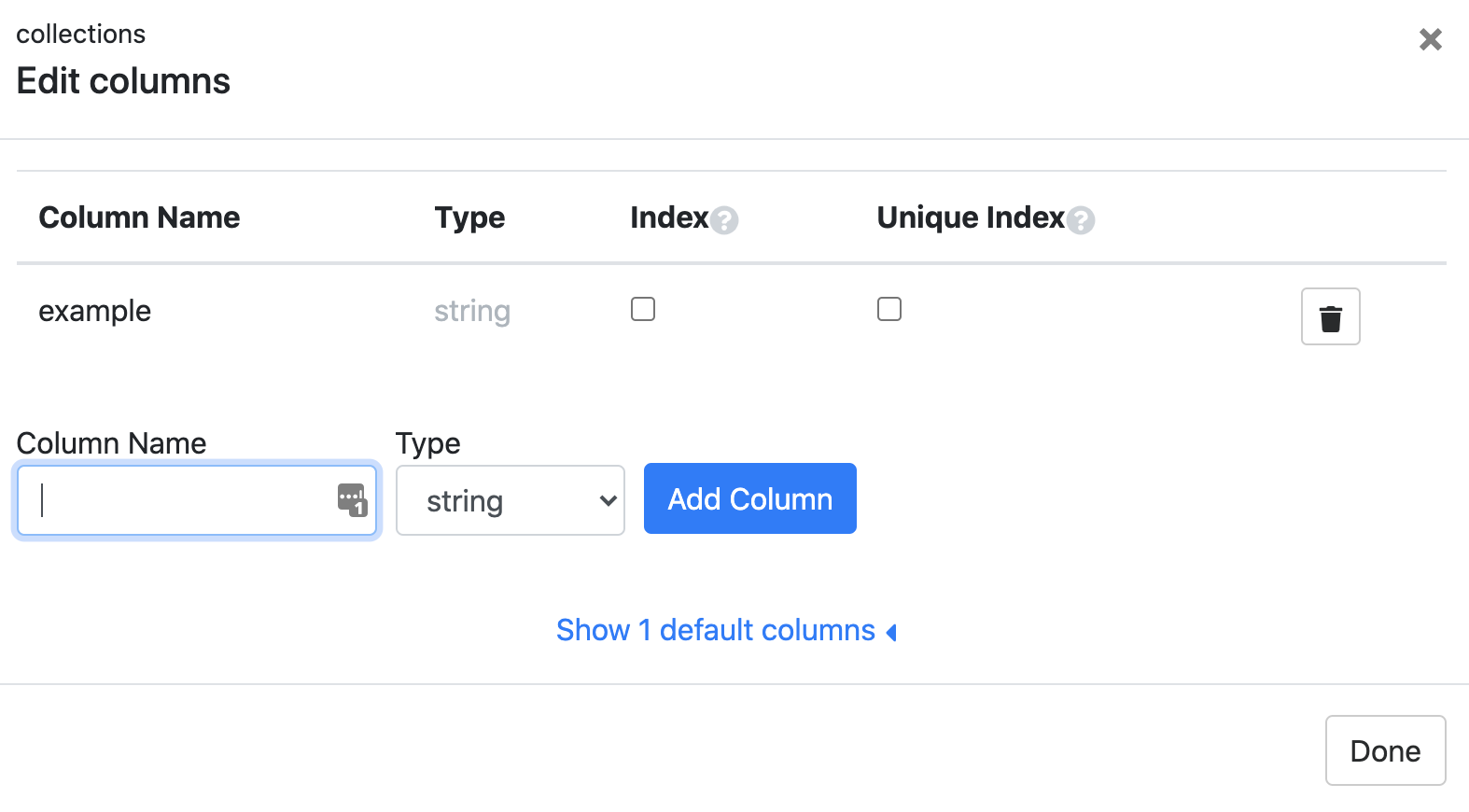Collections
Introduction
The ClearBlade IoT Platform allows storing different data types in your IoT solution through collections. Each collection is available for users and devices to access via consoles, portals, APIs, and SDKs.
Within the ClearBlade IoT Platform context, a collection is synonymous with a database. It will be used extensively across the documentation.
To get a holistic view of collections, we categorize them into these sections:
Collection types: Collection types and how to work with them on the ClearBlade Platform
Collection management: Provides various collection management options
Click here for the Collections tutorial.
Purpose
ClearBlade collections provide a single interface for interacting with numerous database types.
Queries
See ClearBlade Platform SDK for the Collection API.
Data model queries
Data model queries allow developers to run raw SQL queries on the platform and edge instead of using the existing ClearBlade query model. These SQL queries can run against collection, user, and device tables. Developers should use the data model when running operations such as JOIN and other operations not supported by the ClearBlade query model.
See ClearBlade native libraries for the API.
Collection types
Cloud
ClearBlade provides a default cloud collection backed by a PostgreSQL instance. The platform can manipulate these collections regarding their schema and the data put into them.
Connection
The connection type allows developers to integrate existing databases with their IoT Platform application.
MySQL
PostgreSQL
MongoDB
Oracle
Google BigQuery
DB2_Linux
DB2_zOS
DB2_System_i
Microsoft_SQL_Server
Cassandra
CouchDB
To request integrations, please create a support ticket.
The following is required to configure a connection:
Field | Description | Example |
|---|---|---|
Database Type | DB application type | MySQL |
IP Address | Database URL | |
Port | Port number on which the application is running | 5432 |
Database Name | Database name | dbname |
Connection Name | String | example |
Table Name | String | sensor_data |
Username | String | admin |
Password | String | zrHcnzpBenHSOIq0uK/og8R |
Column types
Type | Description |
|---|---|
string | Series of characters. Example: Column 1 |
integer (int) | Positive or negative whole number |
boolean (bool) | True/false |
timestamp | 03/29/21 22:15:07 |
float | Numbers with decimals |
bigint | Large whole numbers |
double | Large numbers with decimals |
jsonb | See below |
binary large object (blob) | A binary data collection stored as a single entity |
universally unique identifier (uuid) | A 128-bit unique identification value. Example: bc37d0c0-fcf2-11d9-8cd6-0800200c9a66 |
jsonb
jsonb enables users to store JSON values in the database tables and query based on keys (for objects) or indexes (for arrays). Send stringified data when creating and updating all tables on a jsonb column.
Click here for an operator and function list.
Index/unique index
Collection columns can be indexed to speed up certain database operations. Unique indexing allows unique values to be used. The async library for indexing can be found under the Collection section. To configure indexing, go to the Edit column in a collection and mark the indexing box type under the column(s) you choose.

FAQ
How do I format the timestamp column in JavaScript to insert it into a collection?
You can create a timestamp variable using var curr_timestamp = new Date(); and insert it into the collection.
